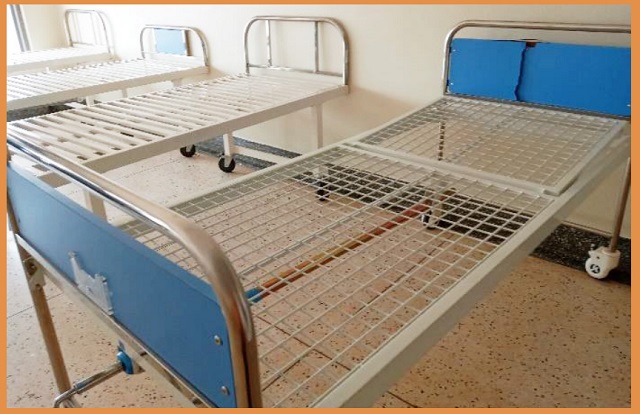
Health ministry, audits give conflicting figures
Kampala, Uganda | ISAAC KHISA | As Ugandans began contracting the novel coronavirus, President Yoweri Museveni on April.03, made an appeal for public solidarity in support of the health care system that was already in a crisis due to limited funding.
Dozens of companies and individuals heeded to his call and poured millions of shillings as well as vehicles into the hurriedly created National Response Fund to COVID–19 in the Office of the Prime Minister now under Dr. Ruhakana Rugunda.
However, the government’s management of COVID-19 resources has remained shrouded in secrecy, raising questions on accountability and transparency as millions of shillings risk to be wasted or stolen.
Recent audit reports and experts in matters finance reveal that to support economic recovery and help detect and respond to COVID-19 pandemic, the government borrowed approximately US$888 million (Approx.Shs3.3 trillion or the equivalent of 7 percent of the 2020/2021 national budget).
US$491.5 million (Approx. Shs1.8trillion) came from the International Monetary Fund, US$300million (Approx. Shs 1.1trillion) from the World Bank, and US$31.6million (Approx. Shs 115.5billion) from the African Development Fund. The government also received grants from various international partners; including European Union, USAID, China, and the US worth millions of dollars.
Similarly, the Ministry of Health received Shs25 billion from the Emergency and Consolidated Fund, Shs94.1 billion in supplementary budget and US$109.7 million in in-kind and cash contribution from the public, private and development partners. Overall, the budget for the multi-sectoral COVID-19 Response from March to June 2020 stood at Shs2.22 trillion.
However, it remains unclear how government has spent these funds and there is growing demand from the public for clarity to enable tracking of these public resources.
Corruption exposed
A recent COVID-19 Intervention Report authored by the Budget Monitoring and Accountability Unit (BMAU) in the Ministry of Finance, Planning and Economic Development in October, which The Independent has seen, reveals a COVID-19 resource utilisation initiative marred in gross irregularities, no proper planning, hasty signing of contracts and flouting of procurement guidelines.
The document also shows a COVID-19 resource initiative characterised by delayed service delivery, procurement of substandard items, and inflating commodity prices.
Currently, four officials from the Office of the Prime Minister are facing a legal suit for allegedly inflating prices for COVID-19 relief food to 1.5million urban poor in Kampala and neighbouring central district of Wakiso and Mukono in April this year.
These include; Christine Gwatudde (former Permanent Secretary OPM), Martin Owor (former Commissioner Disaster Preparedness also the head of Covid-19 relief management), Joel Wanjala (former Assistant Commissioner Procurement) and Fred Lutimba (former Commissioner Disaster Management).
The report, for instance, reveals that M/s Silver Bucks Pharmacy Ltd was contracted to supply and install oxygen plants for Mulago and Entebbe Hospitals at a cost of Shs6.4 billion. It was to, among others, supply 450 cylinders including regulators, humidifier bottles, and cannulas to help save lives of the COVID-19 patients with breathing difficulties. Though the contract was signed on May 06 and the money cleared in the sequent month, deliveries, and installations had not commenced by September 2020.
Surprisingly, the same supplier, M/s Silver Bucks Pharmacy Ltd, installed oxygen plants in 13 Regional Referral Hospitals in 2017 at the same amount that the government is spending now on only two oxygen plants.
Similarly, in May 2016, M/s Silver Bucks Pharmacy Ltd and Naguru Hospital entered into a contract to install 13 oxygen plants at a sum of US$ 1,800,347 (this translated into approx.. Shs6 billon at a then going exchange rate of Shs3, 370).
The health ministry also signed three contracts with M/S Joint Medical Stores worth Shs1.3 billion to supply 1,000 beds and mattresses, 2,000 blankets and 2,000 bed sheets. Each bed was priced at Shs890, 000 and Shs119, 491 for a mattress covered with PVC.
Though all beds and mattresses were reportedly delivered, the monitoring team verified delivery of only 331 beds and mattresses.
“Although over 300 beds were moved from Namboole (Quarantine Centre then) to Mulago Hospital, the latter acknowledged receipt of only 290 instead of the 300 beds communicated,” the report says adding, “Mulago hospital also received 108 mattresses which were not commensurate to the beds provided. Three of beds were already broken and left at Namboole.”
The government also signed a contract with un-identified firm to supply megaphones worth Shs2.9 billion in May this year to facilitate communication of COVID-19 messages in all parishes which currently stands at 10,595.
The report notes that though 108,863 megaphones at Shs230, 000 each and 43,450 pieces of dry cells at Shs10,000 each are said to have been delivered on June 22, 2020, the districts visited by the monitoring team in July, August and September had not received these items. These included; Oyam, Omoro, Apac, Agago, Gomba and Butambala among others.
The health ministry was also allocated a supplementary budget of Shs42.3 billion for procurement and installation of emergency Intensive Care Unit (ICU) equipment that included defibrillators, suction and infusion pumps, nebulizers, mobile x-rays, oxygen concentrators, weighing scales, portable ultrasounds, patient trolleys, ventilators, ICU beds among others, in the Regional Referral Hospitals.
In this, the government signed contracts with JMS to procure ICU equipment worth Shs10.5 billion within six weeks in May this year. JMS was expected to deliver 388 pieces of ICU equipment comprised of 28% ventilators, 25% patient monitors, 24% oxygen therapy apparatus, while the rest (22%) were ICU beds. However, JMS failed to achieve the set deadline; and instead delivered equipment to only six hospitals: Naguru, Entebbe, Jinja, Mbale, Lacor and Lira.
Similarly, M/S Elsmeed EA Ltd was contracted to supply equipment worth Shs26 billion to supply 1,553 units of equipment to the 17 Regional Referral Hospital by August but the deadlines was extended to December citing high demand for the machines.
Meanwhile, some hospitals such as Gulu and Arua are said not to have had adequate space for the ICU equipment. The planned procurement of 38 ambulances worth Shs11billion was still under procurement by September yet initial delivery date was July 30.
In relation to the famous COVID-19 tents at Namboole Stadium, the government procured 20 sleeper tents worth Shs3.8 billion from M/s Lumious Uganda Limited. Though the contract stipulated 20 tents with a capacity of 100 people, only 13 were signed and installed at Namboole by time of monitoring in September 2020.
To make the situation worse, all the procured tends failed and could not be used to accommodate patients as earlier anticipated due to their weak specifications and capacity.
Mobile health facilities at the border points of Elegu, Malaba, Mirama Hills, Mutukula, Katuna and Mpondwe could also not be traced as at mid-September this year as the confirmation of land availability was not done prior to contract signature leading to resource overruns.
The facilities which were to cost Shs7.5 billion, with M/s Modula House Engineering and Construction Company Limited as the contractor, were supposed to house laboratories and staff houses.
The Health ministry also signed a contract with M/s N2M Company Limited in June this year to supply 80 mist sprayers, 99 power sprayers and 19 transport jet pump to aid in disinfection of places, materials of COVID-19 confined places, treatment centers, homes, ambulances among others. But none of the treatment centers visited had received the spray pumps by September except Entebbe Regional Hospital.
The audits also reveal that the Health ministry also implemented a number of activities outside the budget line on equipment including procurement of emergency tools for the Ministry of Health Service Bay, printing of pull up banners and tear drops for the National Fitness Day and purchase of a flag and a bull bar for the Minister of General Duties.
 The Independent Uganda: You get the Truth we Pay the Price
The Independent Uganda: You get the Truth we Pay the Price



The way we handle major things brings embarrassments to the citizens more especially peasants, we major in minor and put much efforts in minor issues, corruption will never stop unless we have qualitative change where the constitution and the rule of law works.we are suffering at the expense of few elites who our enemies.🙆
With this mega mismanagement of covid-19 disaster, the government must be held to account in totality otherwise this grave act tantamounts to murder of innocent ugandans at the hand and benefit of the few heartless and merciless greedy officials. And with such a scandal, many Ugandans have a lot of mistrust in government warning against the pandemic and others doubt the existence of the pandemic in Uganda, nowonder the spike in the infections and deaths.
Further, it may not be surprising that the heartless, evil greedy officials will never be brought to book to face the law since they are highly connected instead they will be showered with praises and rewarded with more juicy contracts to reap more at the misery of vulnerable Ugandans!